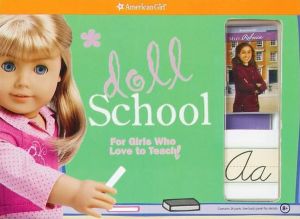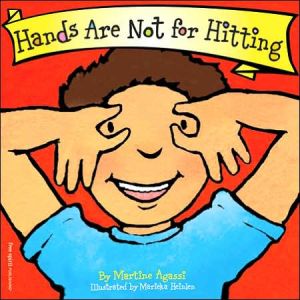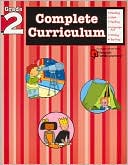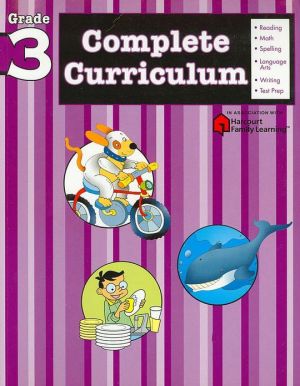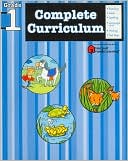Mr. Lincoln's Way
Mr. Lincoln is the coolest principal ever! He knows how to do everything, from jumping rope to leading nature walks. Everyone loves him . . . except for Eugene Esterhause. "Mean Gene" hates everyone who's different. He's a bully, a bad student, and he calls people awful, racist names. But Mr. Lincoln knows that Eugene isn't really bad-he's just repeating things he's heard at home. Can the principal find a way to get through to "Mean Gene" and show him that the differences between people are...
Search in google:
Mr. Lincoln is the coolest principal ever! He knows how to do everything, from jumping rope to leading nature walks. Everyone loves him. . . except for Eugene Esterhause. "Mean Gene" hates everyone who's different. He's a bully, a bad student, and he calls people awful, racist names. But Mr. Lincoln knows that Eugene isn't really bad-he's just repeating things he's heard at home. Can the principal find a way to get through to "Mean Gene" and show him that the differences between people are what make them special? With Patricia Polacco's trademark illustrations and gentle text, Mr. Lincoln's Way celebrates the unforgettable school principal who touches the lives of his students and truly empowers them.Publishers WeeklyEveryone thinks Eugene "Mean Gene" Esterhause, the school bully, is trouble "with a capital T." Everyone but Mr. Lincoln, that is, "the coolest principal in the whole world," who is determined to reach the boy after he's caught calling an African-American first-grader a racist name. Mr. Lincoln enlists Eugene's help in attracting birds to the school's new atrium, a project the fourth grader embraces with enthusiasm. Nevertheless, he again makes racist remarks and lands in the principal's office ("My old man calls you real bad names, Mr. Lincoln. He's got an ugly name for just about everybody that's different from us," the boy says to the African-American principal). Mr. Lincoln points out a heavy-handed parallel the diversity of the birds that Eugene loves. Mr. Lincoln helps free the boy from intolerance, just as Eugene finds a way to free the baby ducklings and their parents from the atrium so they can reach the pond outside. Polacco's (Thank You, Mr. Falker) artwork is assured, from the carefully delineated birds to the expressive faces of her characters, but the intertwining themes result in a thumping message and a too-tidy solution. Ages 6-9. (Sept.) Copyright 2001 Cahners Business Information.
\ Publishers WeeklyEveryone thinks Eugene "Mean Gene" Esterhause, the school bully, is trouble "with a capital T." Everyone but Mr. Lincoln, that is, "the coolest principal in the whole world," who is determined to reach the boy after he's caught calling an African-American first-grader a racist name. Mr. Lincoln enlists Eugene's help in attracting birds to the school's new atrium, a project the fourth grader embraces with enthusiasm. Nevertheless, he again makes racist remarks and lands in the principal's office ("My old man calls you real bad names, Mr. Lincoln. He's got an ugly name for just about everybody that's different from us," the boy says to the African-American principal). Mr. Lincoln points out a heavy-handed parallel the diversity of the birds that Eugene loves. Mr. Lincoln helps free the boy from intolerance, just as Eugene finds a way to free the baby ducklings and their parents from the atrium so they can reach the pond outside. Polacco's (Thank You, Mr. Falker) artwork is assured, from the carefully delineated birds to the expressive faces of her characters, but the intertwining themes result in a thumping message and a too-tidy solution. Ages 6-9. (Sept.) Copyright 2001 Cahners Business Information.\ \ \ \ \ Children's LiteraturePolacco has certainly had an interesting life since most of her books are based upon personal or related experiences. The story of Mr. Lincoln proves that one individual—a teacher, library or school principal—can indeed make a change or difference in a child's life. The boy in this story is called "Mean Gene" he was a disrupter in the classroom, a bully and not interested in studying. One day when Mr. Lincoln notices Eugene looking at a bird in a tree he tries to approach him through a book about birds. For the first time the boy shows interest and talks a bit. Later Mr. Lincoln asks for his help because birds are not coming to the atrium, and gives him the book to read. He became engrossed in the book, he began to help Mr. Lincoln find the right plants and shrubs and even worked on some bird houses. They really got along well and Eugene really started to change. Then one day he reverted back and Mr. Lincoln learns that his father is a very prejudiced and angry man, but he counters by talking about how the birds are a variety of colors, but that doesn't make one better than the other. Eugene tries hard to be a model student and by helping a family of mallard ducks, he helps himself. Mr. Lincoln also has a role in bringing Eugene's grandfather back into his life. A touching and complex story that sends a positive message to kids and creates hope for these working with kids who seem to be lost and categorized as bullies. 2002, Philomel/Penguin Putnam, \ — Marilyn Courtot\ \ \ School Library JournalGr 1-4-In her many books, Polacco has dealt sensitively with a broad spectrum of circumstances and issues. Here she tackles both intolerance and bullying. Mr. Lincoln is the "coolest" principal: he is Santa at Christmas, lights the menorah at Chanukah, and wears a dashiki for Kwanza and a burnoose for Ramadan. The author chronicles his attempt to reclaim "Mean Gene," a child who sasses his teachers, picks on other children, and makes ethnic slurs. "`He's not a bad boy, really,' Mr. Lincoln said. `Only troubled.'" However, the distinction is not clarified. When the principal discovers that the boy is fond of birds, he capitalizes on this interest. He involves him in attracting the creatures to the school atrium while at the same time showing him that just as the differences in the birds render them beautiful, so do the differences in people. While the theme is an important and timely one, Polacco has allowed her message to overwhelm both plot and character development. The story emerges as didactic, laden with heavy-handed metaphor, and too simplistic a solution to a deep-rooted problem. The book may be useful to schools in need of a springboard for discussion of the topic and is graced with impressive watercolors, but it is not up to the author's usual literary standards.-Grace Oliff, Ann Blanche Smith School, Hillsdale, NJ Copyright 2001 Cahners Business Information.\ \ \ \ \ Kirkus ReviewsMr. Lincoln, the African-American school principal is considered "just plain cool" and is loved by all the students-except Eugene Esterhause. "Mean Gene" is a bully who uses racial epithets he has learned from his bigoted father. Mr. Lincoln is determined to reach Eugene and affect a change in his thinking and behavior. When he discovers that Eugene has learned a great deal about nature from his kind grandfather, he enlists Eugene's help in managing the school's new atrium. They become deeply involved with the birds, especially a pair of mallards that have nested there. Along the way, Mr. Lincoln tries to teach the troubled child about acceptance and respect of all his "little birds," both feathered and human. When the ducklings hatch, Eugene and Mr. Lincoln lead them safely to the pond where their parents await. Polacco (Betty Doll, p. 264, etc.) is a master at telling moving stories that gently teach lessons of kindness, compassion, and love. This newest work is only slightly less successful. It is certainly visually appealing, with colorful, expressive illustrations that beautifully enhance the text. Personalities and changing moods are vividly presented in Polacco's signature style. The story, however, seems a bit contrived and derivative. It's a little of Make Way for Ducklings meets To Sir with Love. In fact, endpapers that show a grown Gene Esterhause, now a teacher, indicating there might be more to the story as indeed the flap copy reveals that Polacco based her setting on a school where the ducks and atrium do exist. With that in mind, it is still a sweet story about learning to respect oneself and others, and is well worth the reader's attention. (Picture book. 6-9)\ \

